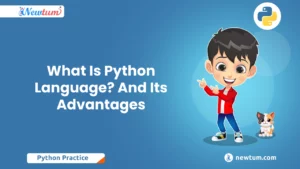Are you starting your coding journey and feeling a bit overwhelmed by C++? You’re not alone! Navigating through all those technical terms can be tricky, but don’t worry—we’ve got your back. This guide, ‘C++ Glossary for Beginners,’ is designed precisely for you. Whether you’re familiar with some terms or completely new, this glossary will break down complex concepts into simple language. Understanding these terms will give you confidence as you dive deeper into the C++ world. Curious to learn more? Let’s unravel the mysteries of C++ together, one term at a time. Keep reading to empower your coding adventure!
Basic Concepts C++ Glossary for Beginners:
- Variable – A named storage location in memory used to hold a value that can change during program execution.
- Data Type – Defines the type of data a variable can hold, such as
intfor integers,charfor characters, andfloatfor decimal numbers. - Function – A block of reusable code designed to perform a specific task, which can be called when needed.
- Constant – A fixed value that does not change during program execution, declared using
constor#define. - Operator – A symbol that performs operations on variables and values, such as
+,-,*, and/. - Expression – A combination of variables, constants, and operators that produces a result, such as
a + b * 2. - Statement – A single line of code that performs an action, like assigning a value (
x = 5;) or calling a function. - Keyword – A reserved word in C++ that has a special meaning, such as
int,return,while, andif. - Comment – A note added to the code to improve readability, ignored by the compiler (
//for single-line comments and/* ... */for multi-line). - Array – A collection of elements of the same data type stored in contiguous memory locations, accessed using an index.
- Pointer – A variable that stores the memory address of another variable, allowing dynamic memory manipulation.
- Reference – An alias for an existing variable, providing an alternative name for direct access.
- Namespace – A declarative region that helps prevent name conflicts by grouping related functions and variables (
stdis the most common namespace). - Preprocessor Directive – Instructions given to the compiler before the code is compiled, starting with
#, like#include <iostream>and#define. - Header File – A file containing function and class declarations, included in programs using
#include, such as<iostream>for input and output. - Library – A collection of precompiled functions and routines that can be used in C++ programs, such as the Standard Library.
- Input/Output (I/O) – The process of taking user input (
cin) and displaying output (cout) using the<iostream>library.
C++ Object-Oriented Programming (OOP)
Here’s a C++ Object-Oriented Programming (OOP) Glossary for Beginners:
- Class – A blueprint for creating objects, defining a set of attributes (variables) and methods (functions).
- Object – An instance of a class containing data and functions related to that data.
- Encapsulation – The practice of bundling data and methods within a class while restricting direct access to some components using access specifiers (
private,public,protected). - Abstraction – Hiding complex implementation details and exposing only essential features through classes and interfaces.
- Inheritance – A mechanism where one class (child/derived) acquires properties and behaviors from another class (parent/base).
- Polymorphism – The ability of different classes to be treated as instances of the same class through a common interface. It allows method overriding and method overloading.
- Constructor – A special function in a class that is automatically called when an object is created, used to initialize object attributes.
- Destructor – A special function in a class that is automatically called when an object is destroyed, used to free resources.
- Method Overloading – Defining multiple methods in a class with the same name but different parameters.
- Method Overriding – Redefining a method in a derived class that already exists in the base class to provide specific behavior.
- Access Specifiers – Keywords that define the accessibility of class members (
private,public,protected). - Friend Function – A function that is not a member of a class but has access to its private and protected members.
- Static Member – A class member (variable or function) shared among all instances of the class, declared using the
statickeyword. - Virtual Function – A function in a base class that can be overridden in a derived class, enabling dynamic (runtime) polymorphism.
- Pure Virtual Function – A virtual function with no implementation in the base class, forcing derived classes to provide an implementation, making the base class abstract.
- Abstract Class – A class that contains at least one pure virtual function and cannot be instantiated on its own.
- Interface – A class that defines a set of pure virtual functions that must be implemented by derived classes.
- This Pointer – A pointer that refers to the current object instance of a class.
- Operator Overloading – Defining custom behavior for operators (
+,-,*, etc.) when used with class objects.
C++ Control Structures
Here’s a C++ Control Structures Glossary for Beginners:
- Loop – A sequence of instructions that repeats until a specific condition is met. Examples include
for,while, anddo-whileloops. - For Loop – A loop that executes a block of code a specific number of times, using an initializer, condition, and increment/decrement (
for(initialization; condition; update)). - While Loop – A loop that executes as long as a specified condition remains true (
while(condition) { // code }). - Do-While Loop – A loop that executes at least once before checking the condition (
do { // code } while(condition);). - Infinite Loop – A loop that never ends because the terminating condition is never met (
while(true) { // code }). - Break Statement – Used to exit a loop prematurely when a specific condition is met.
- Continue Statement – Skips the current iteration of a loop and moves to the next one.
- Conditional Statement – Allows the execution of different code blocks based on conditions (
if,if-else,else-if,switch). - If Statement – Executes a block of code only if a specified condition is true (
if(condition) { // code }). - If-Else Statement – Provides an alternative code block to execute if the condition in the
ifstatement is false (if(condition) { // code } else { // code }). - Else-If Ladder – Allows multiple conditions to be checked in sequence (
if(condition1) { // code } else if(condition2) { // code } else { // code }). - Switch Statement – A control structure that allows variable-based decision-making with multiple cases (
switch(expression) { case value1: // code; break; ... default: // code }). - Case Statement – A block within a
switchstatement that executes when the switch variable matches a specific value. - Default Statement – The fallback case in a
switchstatement that executes when no other cases match. - Ternary Operator – A shorthand conditional operator (
condition ? expression1 : expression2;) used for simple if-else logic. - Goto Statement – A rarely used control statement that allows jumping to a labeled section in the code (
goto label;).
Advanced Topics
Here’s a C++ Advanced Topics Glossary:
- Pointer – A variable that stores the memory address of another variable, enabling direct memory access and manipulation.
- Reference – An alias for another variable, providing an alternative name for direct access.
- Namespace – A declarative region that provides a scope to identifiers to prevent naming conflicts (
stdis the most common namespace). - Dynamic Memory Allocation – Allocating memory at runtime using
newand releasing it usingdelete. - Smart Pointer – A class-based pointer (
unique_ptr,shared_ptr,weak_ptr) that manages memory automatically to prevent leaks. - Function Pointer – A pointer that stores the address of a function, allowing functions to be passed as arguments.
- Lambda Function – An anonymous function used for short, inline operations (
[](int x) { return x * x; }). - Move Semantics – An optimization technique that transfers resources from one object to another instead of copying (
std::move). - RAII (Resource Acquisition Is Initialization) – A programming principle where resource management is tied to object lifetime.
- Multithreading – Running multiple threads in parallel to improve performance, using
<thread>in C++. - Mutex (Mutual Exclusion) – A synchronization tool to prevent data corruption in multithreaded programs.
- Template – A generic programming feature that allows writing flexible and reusable functions/classes (
template <typename T>). - Variadic Templates – Templates that accept a variable number of arguments (
template<typename... Args>). - Exception Handling – A mechanism to handle runtime errors using
try,catch, andthrow. - Type Casting – Converting one data type into another using
static_cast,dynamic_cast,reinterpret_cast, andconst_cast. - Bit Manipulation – Performing operations at the bit level, often using bitwise operators (
&,|,^,<<,>>). - File Handling – Reading from and writing to files using
ifstream,ofstream, andfstream. - Memory Management – Managing memory manually using heap allocation and deallocation (
malloc,calloc,free). - Standard Template Library (STL) – A collection of pre-built classes and functions for data structures and algorithms (
vector,map,set, etc.). - Metaprogramming – Writing code that manipulates or generates other code at compile time using templates.
Real-Life Uses of C++ Terminology
- Video Gaming Industry: Companies like Ubisoft or EA Games use C++ to develop games. The language’s efficiency in handling complex computations and graphical interfaces makes it a prime choice. Ever played Assassin’s Creed? That’s C++ in action!
- Financial Software: Banks and financial services, including Goldman Sachs and Morgan Stanley, utilize C++ for creating high-frequency trading applications. These apps require ultra-fast execution, reliability, and real-time data processing.
- Operating Systems: Operating systems like Microsoft Windows are built using C++. As you might guess, this shows the language’s reliability and performance in creating foundational tech environments.
Test Your Knowledge: C++ Glossary for Beginners Quiz
- What does the term ‘variable’ mean in C++?
- (a) A static value
- (b) A data storage location
- (c) A type of loop
- Which of these is a C++ keyword?
- (a) printf
- (b) std
- (c) int
- What is the purpose of a ‘function’ in C++?
- (a) To store variables
- (b) To execute code
- (c) To print text
- What symbol is used to end a statement in C++?
- (a) .
- (b) ;
- (c) :
- Which of the following is a loop structure in C++?
- (a) for
- (b) if
- (c) else
Understanding these basics is crucial, and I hope these questions sparked some curiosity. Keep exploring and coding!
Did you know you can test your C++ code instantly without heavy installations? Our AI-powered cpp online compiler allows beginners to write, run, and test code efficiently. It’s the perfect companion for practicing coding anywhere, anytime. Give it a shot—you’ll love the ease it brings!
Conclusion
In conclusion, the C++ Glossary for Beginners offers a solid foundation for understanding C++ programming jargon. For more resources and in-depth learning, be sure to check out Newtum. Dive deeper into coding and continue your programming journey with confidence!
Edited and Compiled by
This blog was compiled and edited by Rasika Deshpande, who has over 4 years of experience in content creation. She’s passionate about helping beginners understand technical topics in a more interactive way.



